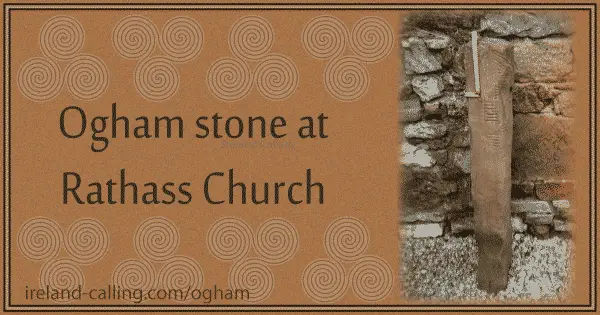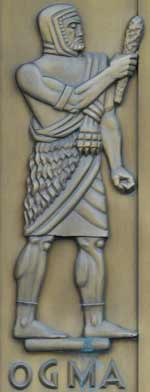Ogham is the oldest known form of written Irish.
Origins of Ogham
Poems written in Ogham
Alphabet named after trees
New age beliefs
Irish art
It consists of an alphabet made of 20 characters named after types of trees.
Ogham is at least 1,700 years old
Inscriptions in Ogham – pronounced o-am – are thought to date back to at least the 4th century AD.

They were carved onto large stones and possibly on wood, although no wood carvings have survived.
There are around 500 Ogham stones in existence today situated in Ireland, England, Scotland, Wales and The Isle of Man.
Most of the surviving Ogham stones are found in southern Ireland in the Province of Munster and contain a name and place name, which suggests they were used as markers of territory.
Legends of Ogham?
There are many legends that attempt to address the origins of Ogham. One is that the Ogham characters were discovered by the Scythian king Fénius Farsaid at the fall of the Tower of Babel or Nimrod’s Tower.
King Fénius discovered four languages here, Greek, Latin, Hebrew and finally Ogham.

Ogham was thought to be the most perfect of all the languages as it was the last to be discovered.
Another legend attributes the invention of Ogham to Ogma, a deity of Irish mythology and a member of the Tuatha Dé Danann.
Ogma was a champion known for his skill and eloquence. He created the ogham as a system for the learned, excluding the foolish.
The first Ogham were said to be seven B’s carved on a birch tree by Ogma as a warning. This is why the Ogham are associated with the trees.
Modern theories about the origin of Ogham
Ogham
Origins of Ogham
Poems written in Ogham
Alphabet named after trees
New age beliefs
Irish art